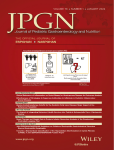Electrogastrography Reveals Post-prandial Gastric Dysmotility in Children with Cystic Fibrosis
ABSTRACT
Objectives:
Cystic fibrosis patients have a wide spectrum of gastrointestinal disorders. The aim of this study was to investigate the function of gastroenteric neuromusculature and its response to a prokinetic.
Methods:
14 CF children aged 8.6 + 1.3 years were studied by electrogastrography and compared to 10 age-matched controls. A second recording was performed in CF patients after administration of cisapride (0.3 mg/kg). Parameters analyzed were percentage of normal gastric rhythm (2.0 to 4.0 cpm), percentage of tachygastria (4.0 to 9.0 cpm), dominant frequency instability coefficient and power ratio.
Results:
CF and control groups were not different in age, height or weight. A significant post-prandial increase in percentage of tachygastria (26.7 + 4.5 versus 12.4 + 2.6; P < 0.05) was seen in CF patients, which was not corrected by cisapride. The power ratio showed a statistical increase in 3 cpm (3.7 + 0.8 versus 1.6 + 0.3; P < 0.05) and in tachygastria (5.3 + 1.2 versus 1.7 + 0.4; P < 0.03) in CF compared with controls. Cisapride had an effect on tachygastria power ratio (3.0 + 0.5; P < 0.04). Analysis of normal rhythm and the dominant frequency instability coefficient were not statistically different in CF and controls.
Conclusion:
This study provides evidence of gastric dysmotility in CF patients.




